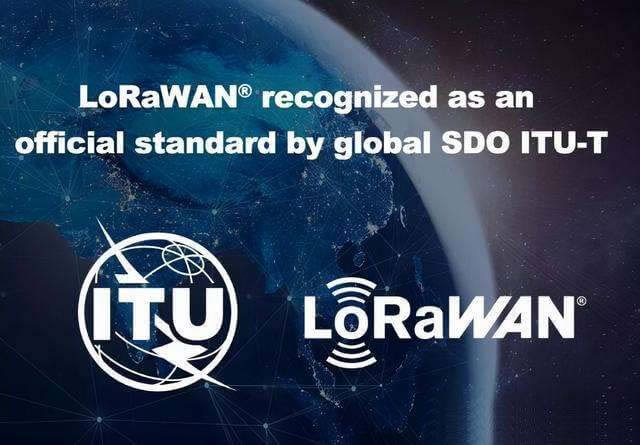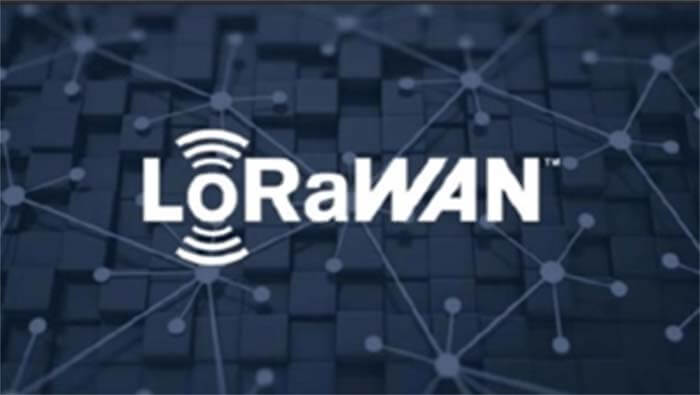Today, we talk about the seven benefits of LoRaWAN technology application.
In December 2021, LoRaWAN officially became the ITU International Standard for Low Power Wide Area Networks and has been endorsed by the International Telecommunication Union (ITU).

LoRaWAN is developed as an open standard and has been widely recognized by the low power wide area network community. The rapid adoption of this standard for global IoT low-power wide-area networks is a testament to its universality.
LoRaWAN is now a very popular LPWA communication standard that uses unlicensed radio spectrum in the ISM (Industrial, Scientific, Medical) band at frequencies ranging from approximately 433 MHz to 868 MHz, and 915 MHz (standards vary around the world).
In the IoT connectivity environment, in addition to smart home networking and office space scenarios, many IoT devices will be connected and communicated in remote environments where the new environment will be inaccessible and require power connections due to M2M transmission coverage limitations.
LoRa and LoRaWAN definition
LoRaWAN is a popular and widely deployed LPWA communication standard that uses unlicensed radio spectrum in the ISM (Industrial, Scientific, Medical) band at approximately 900MHz or 430Mhz (the exact frequency varies around the world). The use of an unlicensed spectrum means that companies can easily roll out networks and provide dedicated networks to enterprises.
While LoRaWAN defines the communication protocol and system architecture of the network, LoRa describes the radio layer. Lora uses Chirp Spread Spectrum (CSS) modulation, which is both energy-efficient and provides a longer range than traditional alternatives. CSS has been used for decades in military and space communications due to its range and interference robustness, but LoRa is the first low-cost implementation available for commercial use.
LoRa networks have a star-shaped layout in which hundreds or thousands of devices communicate in both directions with gateways connected to the core network and eventually the Internet.
Signals from a single sensor or device are received by all gateways in range, which improves reliability and opens up the possibility of location-based services. The network uses sophisticated adaptive data rate algorithms to fine-tune the communication between each device and gateway to minimize power consumption and maximize reliability.
What are the 7 benefits of LoRaWAN choosing?
Coverage With CSS and ADR, devices can communicate with gateways up to 15 km away in open areas and up to 5 km away in cities, meaning that a single gateway can cover all devices around 700 square kilometers. Coverage also extends indoors to reach service ducts in basements or below street level.
The benefits of LoRaWAN technology 1, Low power consumption and longevity
Low power consumption and low peak current requirements, LoRaWAN data transmission and reception requires low current (less than 50 mA), greatly reducing the power consumption of the device, and a single charge can give the device a lifespan of up to 10 years, greatly reducing support and maintenance costs.
The benefits of LoRaWAN technology 2, Cost saving
Extensive coverage and relatively low gateway cost significantly reduce the cost of LoRaWAN network deployment. For devices, communication modules are priced in the $10 range, and unlicensed spectrum means connections cost as little as $1/year.
The benefits of LoRaWAN technology 3, Location services
Since signals from a specific device can be received by multiple gateways, the location of the device can be calculated based on the signal strength and/or signal arrival time at each base station, enabling network -based location services that can be used to track or geo-fence the device.
The benefits of LoRaWAN technology 4, Deep penetration
LoRa radio modulation allows deep indoor penetration and increases the ability to reach sensors located underground at water or gas meters.
The benefits of LoRaWAN technology 5, No need to obtain any frequency license
LoRaWAN networks are deployed on the free ISM bands (EU 868, AS 923, US 915 Mhz), allowing any service provider or company to deploy and operate a LoRaWAN network without the need to obtain a license for any frequency.
The benefits of LoRaWAN technology 6, Fast build and commercialization
LoRaWAN open standards combined with no-cost operating frequencies and low-cost base stations enable operators to roll out networks in just a few months with minimal investment.
Bi-directional communication Fully bi-directional communication supports a variety of use cases that require both uplink and downlink: for example, street lighting, smart irrigation, energy optimization, or home automation.
The benefits of LoRaWAN technology 7, One-stop management
LoRaWAN networks support multiple vertical solutions, allowing service providers to use one platform and standard to manage various use cases such as smart buildings, precision agriculture, smart metering, or smart cities.
Differences between LoRaWAN and 3GPP technologies
For many requirements, LPWAN requires the lowest cost and lowest power. In real use cases (about 20 messages/day), LoRAWAN power consumption is 5 times better than LTE Cat NB1. The required peak current is 10 times lower – equivalent to an order of magnitude reduction in battery size and a ten-year longer lifetime.
Another major difference between LoRaWAN and 3GPP is the use of an unlicensed spectrum. loRaWAN allows easy deployment of networks with thousands of devices in a small area (smart cities, smart buildings, smart airports, smart factories). The enterprise network can be completely under the control of the customer and the data remains encrypted end-to-end.
Besides the What are the Benefits of LoRaWAN Technology article, you may also be interested in the below articles.
What Is The Core 5G NR Technology?




